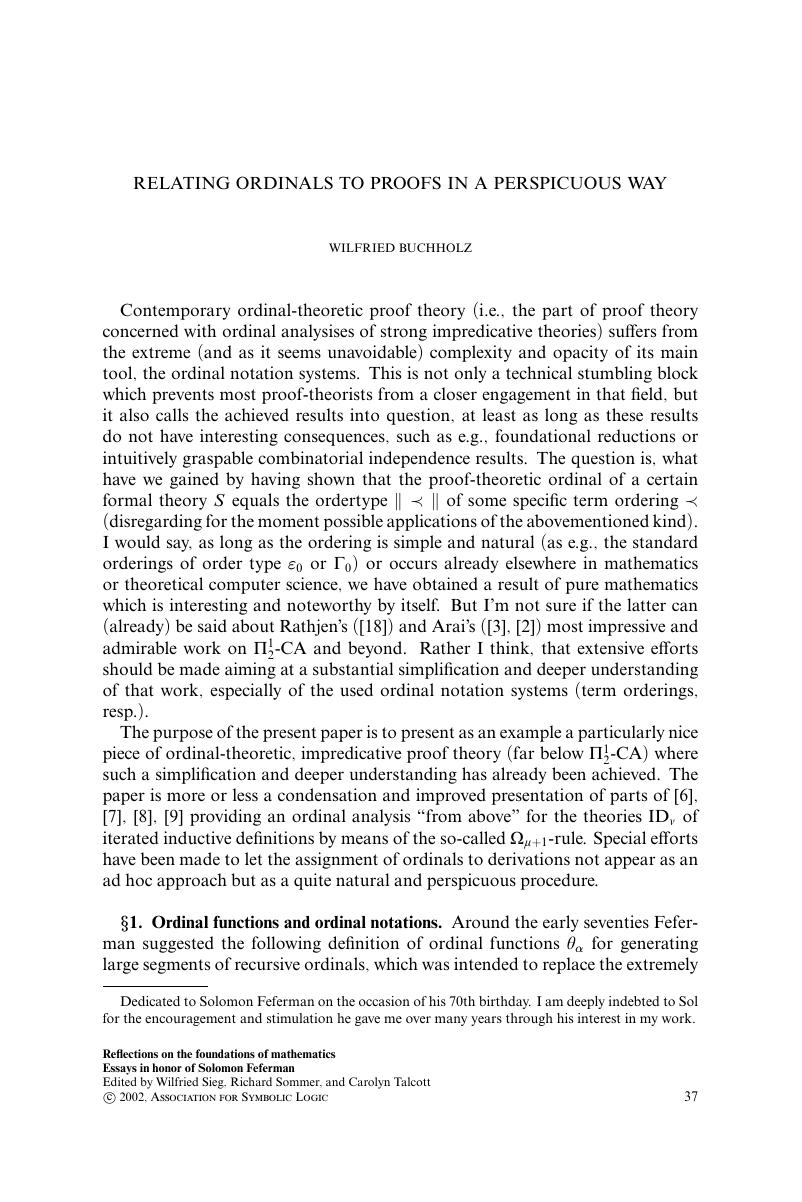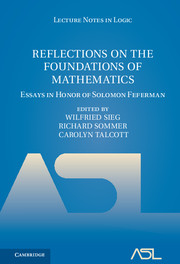Book contents
- Frontmatter
- Preface
- Contents
- PART I PROOF THEORETIC ANALYSIS
- Ordinal analysis without proofs
- Relating ordinals to proofs in a perspicuous way
- Internal finite tree embeddings
- Foundational and mathematical uses of higher types
- The epsilon substitutionmethod and continuity
- Predicativity: The outer limits
- PART II LOGIC AND COMPUTATION
- PART III APPLICATIVE AND SELF-APPLICATIVE THEORIES
- PART IV PHILOSOPHY OF MODERN MATHEMATICAL AND LOGICAL THOUGHT
- Symposium program
- References
Relating ordinals to proofs in a perspicuous way
from PART I - PROOF THEORETIC ANALYSIS
Published online by Cambridge University Press: 31 March 2017
- Frontmatter
- Preface
- Contents
- PART I PROOF THEORETIC ANALYSIS
- Ordinal analysis without proofs
- Relating ordinals to proofs in a perspicuous way
- Internal finite tree embeddings
- Foundational and mathematical uses of higher types
- The epsilon substitutionmethod and continuity
- Predicativity: The outer limits
- PART II LOGIC AND COMPUTATION
- PART III APPLICATIVE AND SELF-APPLICATIVE THEORIES
- PART IV PHILOSOPHY OF MODERN MATHEMATICAL AND LOGICAL THOUGHT
- Symposium program
- References
Summary

- Type
- Chapter
- Information
- Reflections on the Foundations of MathematicsEssays in Honor of Solomon Feferman, pp. 37 - 59Publisher: Cambridge University PressPrint publication year: 2002
References
- 2
- Cited by



